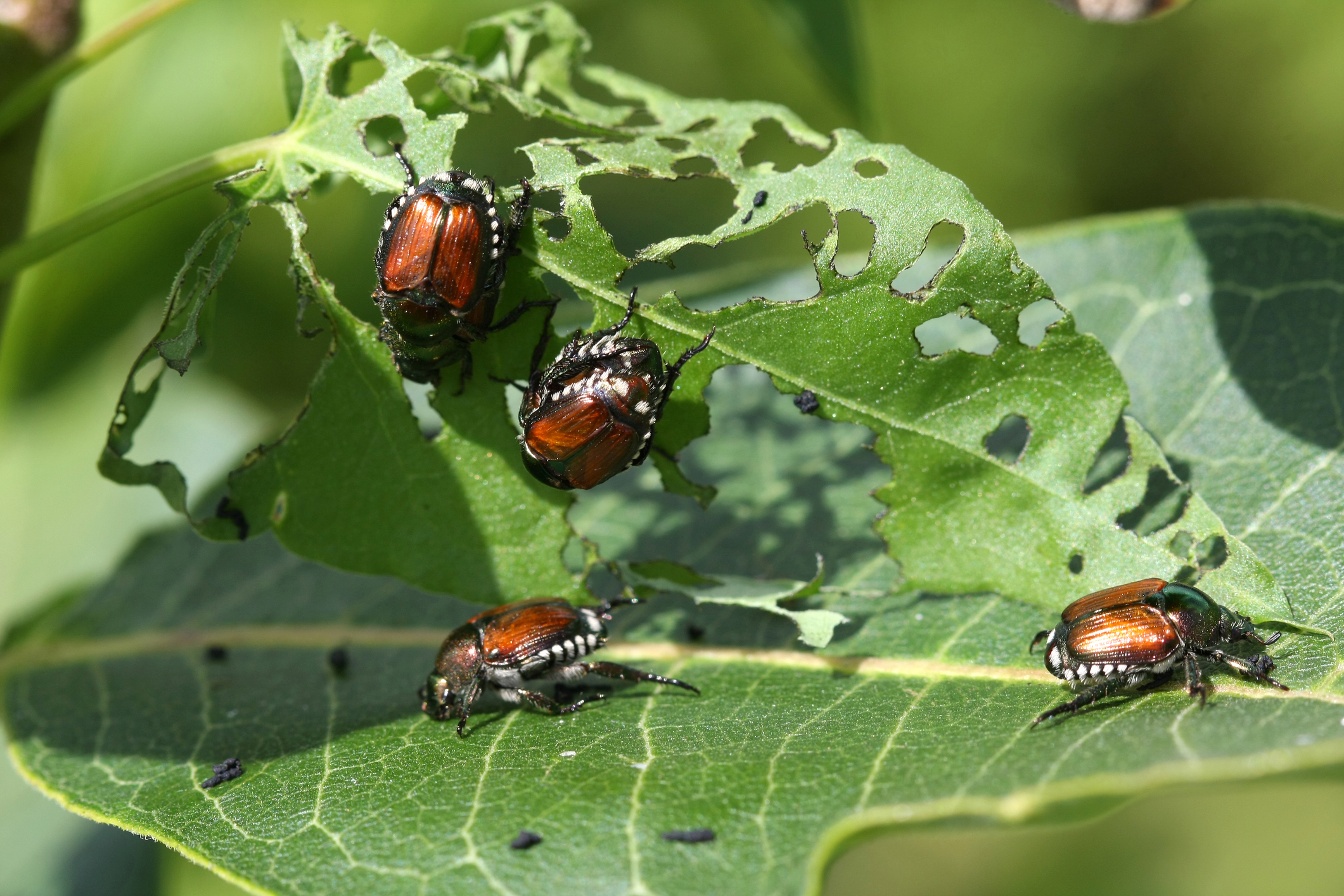Japanese beetles are on the prowl looking for their next meal across the Garden State. They usually come out in June and July and if left unchecked, can wreak havoc in your garden.
Japanese beetles (Popillia japonica) can wreak havoc on your garden, munching on your beloved plants and leaving destruction in their wake. These metallic green pests are not only voracious eaters but can also attract more beetles to your yard.
If you’re tired of battling these invaders, fear not!
Before taking action, it’s crucial to confirm that Japanese beetles are indeed the culprit. Japanese beetles are about half an inch long with metallic green bodies and copper-brown wings. They are known for their distinctive feeding pattern, skeletonizing leaves by consuming the tissue between the veins.
One of the most labor-intensive yet effective methods is handpicking the beetles. Early morning is the best time to do this when the beetles are sluggish. Wear gloves and drop the beetles into a bucket of soapy water to ensure they won’t return to your plants.
Encourage natural predators to control Japanese beetle populations in your garden. Birds, such as starlings, robins, and grackles, enjoy feasting on these beetles. Attracting these birds through bird feeders and bird baths can provide long-term control.
Neem oil is a natural insecticide that can be effective against Japanese beetles. Mix neem oil with water according to the manufacturer’s instructions and spray it on the affected plants. The oil suffocates the beetles and disrupts their life cycle.
Consider applying milky spore, a bacterium that specifically targets Japanese beetle larvae. This biological control method is harmless to other organisms and remains in the soil, providing long-term protection against future infestations.
To protect vulnerable plants, such as roses or berry bushes, use row covers or netting. These physical barriers prevent the beetles from reaching your plants while still allowing air, sunlight, and water to pass through.
Strategically plant companion plants that deter Japanese beetles. Some effective options include garlic, chives, catnip, tansy, and marigolds. These plants emit odors that repel the beetles and can help safeguard your garden.
Japanese beetle traps are available commercially, but exercise caution when using them. These traps release pheromones that attract beetles from far distances, potentially drawing more beetles into your garden. Place the traps away from your garden to lure the beetles away instead.
A well-maintained garden is less attractive to Japanese beetles. Ensure proper irrigation, remove debris and dead plants, and practice good garden hygiene. Healthy plants are more resilient and can better withstand infestations.
If the Japanese beetle problem persists despite your efforts, consider seeking advice from local gardening experts or extension services. They can provide region-specific guidance and recommend additional control measures.
Getting rid of Japanese beetles may require a multi-faceted approach, combining manual removal, natural predators, organic sprays, and preventative measures. Remember that persistence and consistency are key. By implementing these strategies and staying vigilant, you can successfully defend your garden against Japanese beetles and enjoy a thriving, pest-free landscape.

